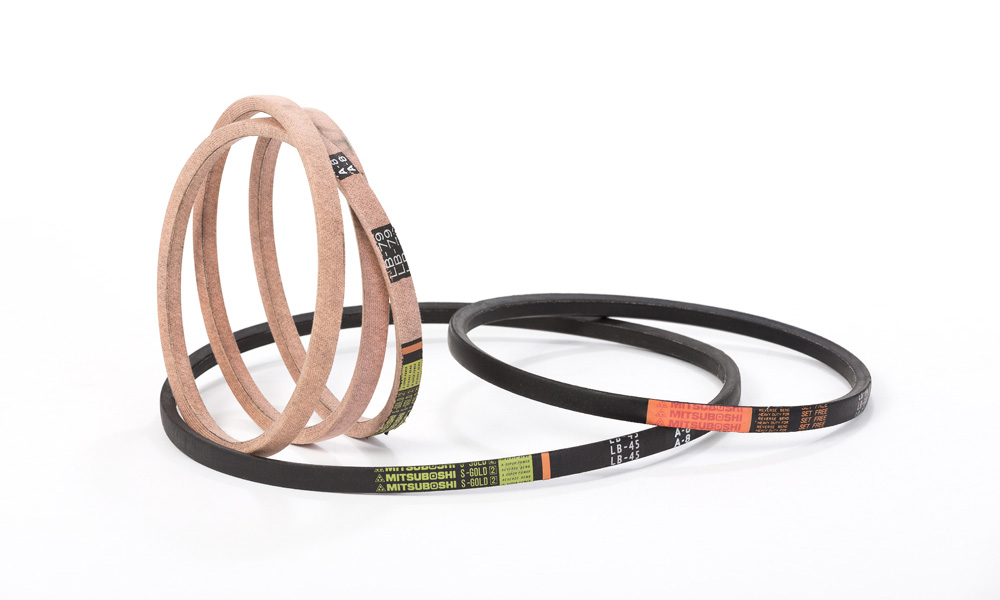The Ultimate Guide to Cogged Belts: What They Are and Why They Matter

If you’re familiar with the world of power transmission systems, you’ve probably heard of a cogged belt before. But if you’re new to the concept or looking to understand its advantages, you’re in the right place. These belts play a crucial role in ensuring the smooth operation of machinery by transferring power efficiently. Whether you’re an engineer, a technician, or simply someone interested in learning more, this guide will walk you through everything you need to know about cogged belts and why they outperform conventional belts in many situations.
What is a Cogged Belt?
A cogged belt is a type of V-belt that has grooves or notches (cogs) on its inner surface. These cogs provide better flexibility, allowing the belt to bend around smaller pulleys without losing strength or efficiency. Compared to traditional smooth V-belts, cogged belts are designed to offer enhanced performance, especially in applications where high power transmission and precision are required.
Understanding the Different Types of Cogged Belts
Cogged belts come in various types, each designed for specific applications. Here are some of the most common types:
- Cogged V Belt
A cogged v belt combines the classic V-belt shape with the added advantage of cogs. This design improves the belt’s flexibility, heat dissipation, and grip, making it an excellent choice for heavy-duty machinery that operates under high stress. - Raw Edge Cogged Belt
A raw edge cogged belt has its edges left uncut, allowing it to grip the pulleys more effectively. This design minimizes slippage and improves efficiency by providing better traction. It’s often used in automotive and industrial applications where durability and performance are key. - Cogged Timing Belt
A cogged timing belt is specifically designed to synchronize the rotation of engine components. These belts feature cogs that fit perfectly into the corresponding grooves of the pulley, ensuring precise timing and reducing the risk of misalignment. This type of belt is essential in automotive engines and industrial machines where timing accuracy is critical. - Toothed V Belt
Similar to a cogged belt, a toothed v belt also features grooves or teeth that allow for better flexibility and grip. It is often used in applications where traditional belts may not provide the desired level of performance.
Key Benefits of Cogged Belts
So, why choose a cogged belt over a traditional one? Here are a few notable benefits:
Improved Flexibility: The cogs allow the belt to bend more easily around smaller pulleys, reducing wear and tear and increasing overall longevity.
Better Heat Dissipation: Due to the design, cogged belts dissipate heat more effectively, preventing overheating and extending the life of the belt.
Enhanced Efficiency: Cogged belts reduce energy loss caused by slippage, ensuring that more power is transmitted to the intended machinery.
Greater Durability: These belts are built to withstand high-speed operations and heavy loads, making them ideal for demanding applications.
Where Are Cogged Belts Used?
Cogged belts are used across various industries, including:
- Automotive Sector: Cogged timing belts play a vital role in keeping engine components synchronized.
- Manufacturing Plants: Machines with high power demands rely on cogged belts to ensure smooth operation.
- Agriculture and Construction: Heavy machinery used in these fields benefit from the durability and efficiency of cogged belts.
How to Choose the Right Cogged Belt?
When selecting a cogged belt, it’s important to consider factors like load capacity, operating environment, and the size of the pulley. Matching the right belt to your machinery ensures optimal performance and longevity.
“Cogged belts offer numerous advantages over traditional belts, making them a preferred choice in many industries. Whether you need a cogged v belt, a raw edge cogged belt, or a cogged timing belt, understanding the nuances of each type will help you make an informed decision. For businesses and industries that rely on high-performance belts, it’s essential to source them from reputable cogged belt manufacturers who ensure quality and durability. Additionally, for applications that require even higher load capacities and durability, industrial v belts provide an excellent alternative, ensuring smooth and reliable operation in demanding environments. When you invest in the right belt, you’re investing in the efficiency and reliability of your machinery.”



